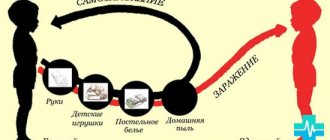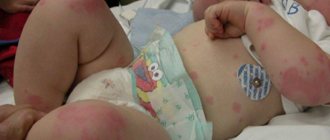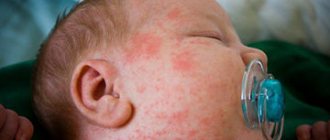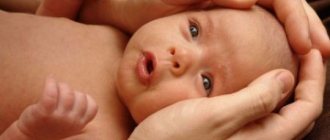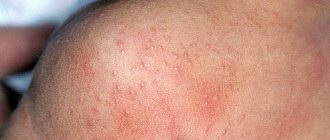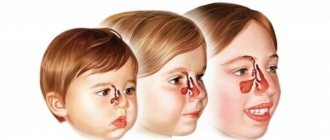The holiday season is ahead. Over the winter, we all missed the sun and warmth. But the sun and heat are not as harmless as they seem at first glance. Even in our latitudes, no one is safe from sun and heatstroke. Especially when it comes to children.
Today we’ll talk about a topic that is very relevant for all parents in the summer: heat and sunstroke. Moreover, the relevance remains regardless of where you will relax with your children - at sea or in the country.
Let's look at the causes and symptoms of heat and sunstroke, first aid, and, of course, prevention of such conditions.
The consequences of overheating are often underestimated by parents. Heat stroke in a child is a serious problem. The insidiousness of this condition is that the first symptoms of the disease can be perceived as the onset of a cold or simple malaise and fatigue.
Late diagnosis always leads to an advanced condition and, consequently, to serious consequences that require serious treatment. That’s why every parent needs to know everything about overheating of the body and measures to prevent it.
Mechanism of thermal shock
With general overheating of the body, which can begin after an ambient temperature of 18°C, two main processes are activated: heat radiation and increased sweating.
- The radiation of heat from the skin is ensured by dilated blood vessels. It will continue as long as the ambient temperature is below the temperature of the exposed skin surfaces (up to 33°C). At higher numbers or at high humidity, the radiation process becomes physically impossible.
- Increased sweating is the first sign of heat stroke in a child. It promotes the evaporation of liquid from the surface of the skin, causing it to cool. When radiation is blocked, sweating remains the only compensatory mechanism to which the lungs come to the rescue. Hyperventilation contributes, albeit slightly, to evaporation from the mucous membranes of the respiratory system. In children under 3 months, the sweat apparatus is underdeveloped, so they can only save themselves by rapid breathing.
Such compensation cannot last long and a decompensation phase begins: the vessels dilate, blood pressure drops, body temperature rises, and collapse may occur (blood distribution in the lower sections and flow away from the head). This is accompanied by excitation and then depression of the central nervous system.
Causes of overheating
Although sunstroke is considered a special form of heatstroke, they are not identical. If only because they have different causes.
In other words, if a child is in the shade in hot weather with a hat, then he will not have sunstroke, but he is not immune from developing heatstroke.
The cause of heat stroke is general overheating of the entire body due to prolonged exposure to high temperatures. Due to overheating, a breakdown occurs in the functioning of the thermoregulation center in the diencephalon. The body actively produces heat, but cannot give it away.
Heat loss normally occurs mainly through the production of sweat. Sweat, evaporating from the surface of the skin, cools the human body.
Additional options for heat transfer are the expenditure of energy (heat) to warm the inhaled air and expand the blood capillaries at the surface of the skin (the person blushes).
During hot weather, little heat is spent on warming the inhaled air. And two other thermoregulation mechanisms work. If we don’t interfere with them, of course...
Useful: Symptoms, treatment and prevention of thrush in young children
What should I do to avoid interfering? It's simple! Firstly, parents should pay special attention to ensuring that the child has something to sweat with and that his clothes allow the sweat to evaporate.
There is one more nuance here. Liquid (in this case, sweat) evaporates if the surrounding air is drier than the layer of air directly next to the body, under clothing. When humidity is high, sweat flows in a stream, but does not evaporate. Simple laws of physics apply. Consequently, skin cooling does not occur.
Plus, to prevent overheating, clothing should be loose so that heat from the dilated blood capillaries is freely removed from the skin.
Let’s summarize what has been said and add something, systematically answering the question: “What leads to a violation of heat transfer?”
So, the following factors complicate heat transfer and cooling of the body:
- heat (air temperature above 30°C). At temperatures above 36°C, heat is not removed from the surface of the skin at all, and sweat does not evaporate;
- high air humidity;
- improperly dressed (dressed too warmly or wearing synthetic clothing in which the skin cannot breathe and sweat does not evaporate or absorb);
- prolonged exposure to the sun (no shade);
- intense physical activity in the heat;
- deficiency of fluid intake (the child drinks little);
- Excess subcutaneous fat in plump children interferes with the release of heat.
- fair-skinned, fair-haired children tolerate heat less well;
- taking antiallergic (antihistamine) drugs slows down heat transfer;
- disruption of the heat transfer process may occur due to pathology of the central nervous system or due to the physiological immaturity of the thermoregulation system in infants.
Heatstroke can also develop in children who are in a closed car in the heat or during a traffic jam, when the car is practically motionless. When the air temperature outside is about 32-33°C, the temperature inside the car can rise to 50°C within 15-20 minutes.
Now let's talk about sunstroke. It is a consequence of exposure to direct rays of the sun on a person’s head. That is, the cause of sunstroke can be expressed in a simple phrase: “My head is hot.”
The time for symptoms of sunstroke to appear varies. It happens that something wrong is felt immediately while being in the sun. But often the symptoms of sunstroke develop delayed, 6-9 hours after returning from a walk in direct sunlight.
Mechanism of sunstroke
In contrast to thermal disturbances from the central nervous system, these are the initial signs of sunstroke in a child. They are associated with a sharp dilation of blood vessels, their congestion, increased permeability and the development of edema of the meninges under the influence of solar heat. Hyperthermia during sunstroke is of central origin and is caused by excitation of the thermoregulation center.
An increase in temperature speeds up the metabolism, which increases the heating of the body (a vicious circle develops). Naturally, there is also a general overheating of the body with all the listed reactions.
In both cases, sweating also plays a negative role: it leads to loss of fluid and microelements. As a result, the blood thickens, its viscosity increases, and this increases the load on the heart.
First aid
If your baby is exposed to hyperthermia, you should immediately provide him with first aid. In case of slight overheating, timely intervention will allow the condition to be normalized in the shortest possible time. The smartest thing to do is to call an ambulance, and before it arrives, try to help the child on your own.
The victim must be removed from the source of heat exposure. It is recommended to place the child in a cool place that is well ventilated.
Then undress the victim and lay him down comfortably, so that his head is slightly elevated.
The baby can be covered with a towel soaked in water or wiped with a damp cloth.
Place a cold compress under your head.
You can place the child in a bath with warm water (within 18-20 degrees). Give him cool water to drink, after adding soda and salt to it (0.5 tsp per half liter of water).
If you lose consciousness, inhale ammonia.
To normalize heart function during heatstroke, doctors administer a water-salt solution and carry out manipulations aimed at stabilizing pressure and relieving convulsions, if any.
Antipyretic medications are used to reduce fever.
Causes of Heat Stroke
The cause is anything that can lead to general overheating of the child’s body:
- inadequate heating of the living space;
- wrapping up and dressing the child warmly out of season;
- synthetic airtight clothing for children;
- prolonged exposure to hot water while swimming;
- visiting the steam room inappropriate for children;
- hot weather.
Causes of sunstroke
The effect of direct sunlight on a child's uncovered head. This also includes the surrounding heat.
Features of hyperthermia in children
Hyperthermia in childhood has some features. Here are some of them:
- In most cases, the little victim develops a fever, although the temperature in this condition can vary. For example, heat stroke + bacterial infection in a child’s body provokes an increase in body temperature to 41 degrees or more.
- The presence of fever is considered a favorable phenomenon, and the development of hyperthermic syndrome is considered negative (the syndrome causes a fever of more than 41.7 degrees). This temperature leads to dehydration and other serious disturbances in the functioning of the body.
- In children from six months to 6 years old, with hyperthermia, the temperature rarely rises above 35.5 degrees, but if bacteria “awaken” in the body, it can rise to 40 degrees.
- In young patients with pathologies of the central nervous system, with severe overheating and respiratory diseases, symptoms appear associated with the insufficient effectiveness of antipyretic drugs.
Doctors identify several patterns of fever in case of heat stroke:
- the risk of muscle spasms increases as the temperature rises;
- 4% of overheated children suffer from muscle cramps;
- the formation of paralysis is often characteristic of children with congenital pathologies of the development of bones and joints, calcium deficiency in the body;
- against the background of high temperature, exacerbation of internal inflammatory diseases (otitis media, sinusitis, tonsillitis, etc.) may occur.
Risk group
Heat and sun don't affect everyone the same. Some children are most susceptible to the negative influence of these factors.
- Babies.
- Children weakened after illness.
- Teenagers with the onset of hormonal changes.
- Obese children.
- Hypotrophics.
- Children with cardiac or respiratory pathology, cancer patients or other chronic debilitating diseases.
Prevention
In order not to provoke heatstroke, you must adhere to certain rules. Here are some tips to help protect your baby from severe overheating:
- It is better for children to be in spacious, cool rooms (room temperature no more than 21-24 degrees). To get such a favorable atmosphere, you can simply open the windows or turn on the fan or air conditioner.
- If the weather is hot outside, then you need to dress your baby so that he does not overheat. It is advisable to buy light clothing, things made from natural light fabrics that are highly breathable.
- Doctors advise not to overfeed children in the heat, not to give fatty, high-calorie foods. It is better to feed in small portions, but often.
- Children should receive enough fluids. Cool drinking gives a chance to maintain normal water-salt balance in the body. You can drink tea, still mineral water, compote, natural bread kvass.
- Parents must monitor the baby. It is worth limiting walks and physical activity in the heat. If it is necessary to go outside, then the child must wear a hat and try to move through areas with shade.
- Rules of conduct on the beach: you cannot visit swimming areas from 11 a.m. to 4 p.m. (highest solar activity), you are prohibited from falling asleep in the sun, and alternate swimming and resting on the sand more often.
Symptoms
The similarity of the symptoms of heatstroke and sunstroke in a child allows us to combine them into one column. Just remember that sunstroke in a child is primarily manifested by symptoms of irritation of the membranes of the brain.
Symptoms
- Increased sweating.
- Redness of the skin.
- Weakness and dizziness.
- Dry mouth.
- Nosebleeds.
- Temperature increase.
- Increased breathing and heart rate.
- Nausea, retching, vomiting.
- Weakening of the pulse strength in the peripheral arteries.
- Excitement, followed by depression of the central nervous system, loss of consciousness, and delusional states. In the terminal period - convulsive syndrome, hallucinations and coma.
Consequences
Once heatstroke is diagnosed, first aid must be provided immediately until paramedics arrive. In such a situation, every minute is important, otherwise overheating can lead to very unpleasant and life-threatening consequences. Complications after violation of thermoregulation:
- acute respiratory failure;
- blood thickening;
- damage to the central nervous system;
- renal failure;
- shock.
Emergency actions
The principles of providing emergency care for overheating and sunstroke are practically the same. It all starts with calling an ambulance, regardless of the child’s subjective condition. Only a doctor after a physical examination will determine the severity of the changes that have occurred.
- If a child has a heatstroke, first aid is to gradually cool the body. This includes placing it in a cool room, and applying towels soaked in cool water to the forehead, legs and armpits. You can keep your baby cool by using a cool shower, fan, or fanning. It is imperative to rid your baby of excess clothing. In a collapsoid state, it is necessary to lay him on a flat surface and raise his legs (on a pillow, bolster). What else should you do if your child has heatstroke? Eliminate dehydration! For this purpose, clean cool water, tea, rosehip or dried fruit decoctions are used. Diluted freshly squeezed juices and fruit drinks are allowed. The child must be given water constantly, several sips at a time.
- First aid for sunstroke in children is similar: it is necessary to cool the body and give plenty of fluids. Moreover, a cool compress on the forehead is a mandatory procedure. To reduce the congestion of the brain, in contrast to simple overheating, place a pillow or cushion under the head, and do not raise the legs. In case of nausea and vomiting, the child is turned on his left side to avoid aspiration of vomit. But the first thing to do in case of sunstroke is to take (carry) the child to the shade!
First aid for overheating
- Move baby to a shaded or cool, ventilated area. Try to keep the space around the victim open. It is necessary to exclude mass gatherings of people (onlookers). Call an ambulance.
- Place the child in a horizontal position.
- If consciousness is impaired, the legs should be in an elevated position. Place clothing or a towel under your ankles. This will increase blood flow to the brain.
- If nausea or vomiting has already begun, turn your head to the side so that the child does not choke on vomit.
- Remove your baby's outer clothing. Release your neck and chest. It is better to remove thick or synthetic clothing altogether.
- The child must be thoroughly fed with water. Give water in small portions, but often. The water should not be very cold, as this can cause stomach cramps and vomiting. It is better to drink mineral water or special salt solutions (Regidron, Normohydron). The baby loses salts through sweat. Due to their rapid mass loss, the concentration of electrolytes in the body decreases. This may cause seizures. Saline solutions quickly restore the water-electrolyte composition
- Wet any cloth with cool water and apply it to the forehead, neck or back of the head. Wipe your baby's body with a wet cloth. You can gradually pour more and more water over your body with a temperature of about 20°C. You cannot suddenly bring a hot baby into the water (sea, pond).
- Then apply a cold compress (a bag or bottle of cold water) to your forehead or back of your head. A very small child can be wrapped in a wet diaper or sheet.
- Provide fresh air. Fan it with a fan-like motion.
- If the baby's consciousness becomes clouded, carefully let him sniff a cotton ball soaked in 10% ammonia (available in any car first aid kit).
- In an emergency situation, when the baby stops breathing, when the medical team has not yet arrived, you need to save the child yourself. You will have to remember what was taught in medical or military training classes. You need to tilt the child's head back slightly so that the chin moves forward. One hand should be placed on the chin and the other should cover the child's nose. Take a breath. Release air into the baby's mouth for 1-1.5 seconds, clasping the baby's lips tightly. Make sure your baby's chest rises. This way you will understand that the air went into the lungs. After suffering from heat illness, it is simply necessary to adhere to bed rest for several days. These recommendations should not be violated. After all, this time is necessary for a small organism to restore the normal functioning of the nervous and cardiovascular systems, to normalize some metabolic processes.
Helpful: Why does a newborn have trouble sleeping at night?
Medication assistance
The emergency doctor prescribes medications to support the child’s body, but, having determined the child’s condition as serious, he refers him to hospitalization.
- If your child has a mild degree of heat or sunstroke, the measures you have taken correctly will be sufficient and no special treatment will be required.
- In case of moderate severity, symptomatic therapy is carried out: lowering body temperature, normalizing breathing and heartbeat, and correcting hemodynamics. Therapy is prescribed by a local doctor or carried out in a day hospital.
- In case of severe sunstroke or heatstroke in a child , treatment is carried out in the intensive care unit, where pseudomeningeal symptoms are eliminated, parenteral correction of water-salt balance is carried out, and in case of coma, cerebral edema is removed.
Symptoms
The symptoms of heat stroke are similar in children of different ages.
Infants suffering from hyperthermia begin to cry loudly, their faces become red, and their body temperature rises. The stomach and back become sticky, and symptoms of dehydration (red eyes, dry lips) may occur. Children in this state are apathetic and eat poorly.
Heatstroke in infants can be triggered not only by hot weather, but also by overly warm clothing that is not appropriate for the weather conditions.
In children older than 12 months, the symptoms of heat stroke are more pronounced. Among the most common signs are:
- redness of the skin,
- increase in body temperature,
- urge to vomit,
- thirsty
- pain in the head.
If symptoms of warm stroke appear, the child should be taken to a medical facility as quickly as possible. Lack of timely treatment in cases of heat exhaustion leads to rapid progression of the process, which is fraught with disastrous consequences.
Prevention of sun and heat stroke in children
It is easier to protect a child than to give him first aid with shaking hands. And the principles of prevention are quite simple and accessible to everyone.
- Don’t overheat your child: buy natural clothes, dress according to the weather, make him wear a Panama hat or a cap when it’s hot, and even better, let him play in the shade.
- Try to calm down the child's excessive activity in hot weather , provide him with adequate fluids. Although the drinking regime must always be observed.
- Try not to appear outside with your child during the high solstice.
- If you are at a resort, get an umbrella and sunbathe wisely: your child’s first exposure to the sun should last no more than 5 minutes, then up to 10 minutes. You must leave the beach at noon.
- In hot weather, feed your child light, non-aggressive foods that do not absorb water from tissues.
- Do not overheat the house, the comfort temperature is 18°C. Monitor humidity and regular ventilation of living rooms.
- Do not try to accustom a small child to such a “useful procedure” as a bath. We adults contain 70% water, and children contain up to 80%. In a steam room, they are guaranteed to overheat.
- Do not bring your child to a state in which he cannot normally withstand stress , including heat stress: to obesity, exhaustion, vitamin deficiency.
- Do not take a sick or recovering child into the sun.
How to prevent sunstroke in a child
“Try not to be outside in the heat, from 10 am to 5 pm,” advises pediatrician Elina Abdujabarova. – At this time it is dangerous to play on the beach or walk under the scorching sun. In hot, sunny weather, children should not be outside without a hat for more than 30–60 minutes. This is enough time to get sunstroke.”
The baby's clothes should be light, made from natural, breathable fabrics. On your head you must wear a hat, Panama hat or a light cap. Offer your child water regularly when you walk outside in the summer or relax on the beach. And don’t forget about proper nutrition: fried, high-calorie, carbohydrate-rich foods help raise body temperature, while vegetables and fruits help the body’s thermoregulation.
Causes
Heatstroke or sunstroke occurs in most cases due to overheating of the body. To prevent such a situation, the famous doctor Komarovsky advises following two simple rules:
- always have liquid with you to quench your child’s thirst;
- choose clothes for your child from breathable fabrics that allow sweat to pass through and are loose against the skin.
The following factors can interfere with heat transfer, and therefore lead to heatstroke in a child:
- high humidity;
- outdoor games during the hot season;
- violation of the drinking regime;
- excess weight;
- air temperature above 36°;
- taking certain medications.
Heat transfer may be impaired due to pathology of the central nervous system. In infants, this is caused by physiological immaturity of thermoregulation.
Doctors have identified the following patterns in the body’s behavior when overheated:
- muscle pain increases with rising temperature;
- seizures occur in 4% of children;
- For children with pathologies of the musculoskeletal system, heat stroke is dangerous due to the formation of paralysis;
- Internal inflammatory diseases at elevated temperatures become acute.
